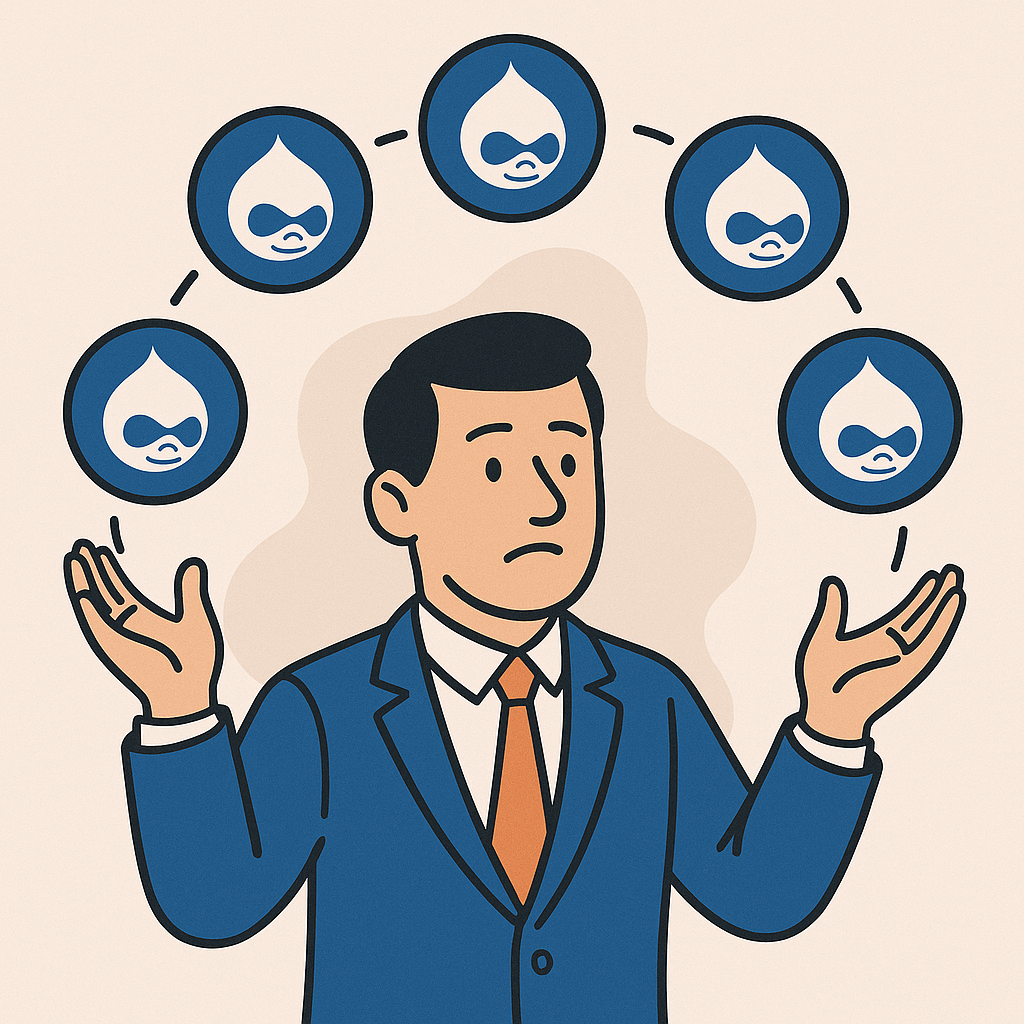The Challenges of Managing Multiple Drupal Websites

Managing multiple Drupal websites is a reality for digital agencies, web developers, and enterprise teams. As your portfolio of sites grows, so do the challenges - from staying on top of security updates to managing different hosting environments and onboarding new team members.
In this post, we’ll explore the common problems faced when managing several Drupal sites and how a centralized tool like Fleetview can simplify your workflow, reduce risk, and boost productivity.
Why Managing Multiple Drupal Sites Is Challenging
Whether you manage 3 sites or 300, these issues are familiar to most Drupal professionals:
1. Staying Up to Date with Drupal Core and Module Security Updates
Security is a top concern for any Drupal site owner. With frequent updates to core and contributed modules, it’s easy for vulnerabilities to go unnoticed - especially when you’re manually checking each site.
Solution: Fleetview provides a unified dashboard that shows pending updates across your entire portfolio, so you can quickly identify which sites need attention and take action.
2. Handling Diverse Hosting Environments and Server Setups
Drupal websites are often hosted across different platforms, environments (dev, staging, production), and server configurations. This introduces complexity and increases the risk of performance issues, downtime, or misaligned PHP/database versions.
Fleetview Advantage: Monitor server health, SSL certificates, and environment status all in one place, regardless of your hosting provider.
3. Streamlining Team Collaboration and Developer Onboarding
Inconsistent documentation and disorganized project info slow down new developers and lead to errors. Teams often rely on disconnected tools like spreadsheets, cloud docs, and Slack threads.
Fleetview Feature: Attach documents, coding standards, credentials, and deployment instructions directly to each project, environment, or server - making onboarding and collaboration seamless.
4. Tracking Custom Features, Modules, and Client-Specific Needs
Every Drupal project has unique requirements - from third-party integrations to custom content types. Without proper tracking, developers waste time rediscovering existing features or reimplementing similar solutions.
Smart Tracking: Use tags and notes in Fleetview to document key features, modules, and client expectations per project.
5. Reducing Time Wasted on Admin and Maintenance Tasks
Manually logging into each site to check updates or server health isn’t scalable. The more sites you manage, the more time is lost on repetitive maintenance and admin work.
Efficiency Boost: Fleetview eliminates the need for manual checks with centralized insights, automated notifications, and update visibility.
Why Use Fleetview for Drupal Site Management?
Fleetview is a Drupal site management tool designed for agencies and teams that need visibility and control across many websites. It connects project documentation, update tracking, environment monitoring, and team coordination - all in one dashboard.
By using Fleetview, you:
Reduce time spent on maintenance
Improve site security and uptime
Streamline developer onboarding
Maintain better project documentation
Gain peace of mind across your entire Drupal fleet
Final Thoughts
Managing multiple Drupal websites is no small task -but the right tools can turn chaos into clarity.
If your agency or team is juggling site updates, hosting environments, and scattered documentation, it's time to simplify with Fleetview. Designed for Drupal developers, project managers, and technical leads, Fleetview brings everything you need into one clean, actionable dashboard.
Ready to take control of your Drupal fleet?